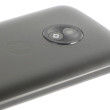HAC
(Hearing Aid Compatible)
When wireless devices are used near hearing devices (such as hearing aids and cochlear implants), users may detect a buzzing, humming, or whining noise. Some hearing devices are more immune than others to this interference, and wireless devices also vary in the amount of interference they generate.
The wireless telephone industry has developed ratings to assist hearing device users in finding wireless devices that may be compatible with their hearing devices. Wireless devices that are rated will have the rating displayed on their box together with other relevant approval markings.
The FCC mandates hearing aid compatibility for effectively all cell phones sold by US carriers.
See: FCC
Prior to 2024, each device with rating from the FCC had a separate M-rating and a T-rating (see below). From roughly 2024 on, this has essentially been replaced with a single rating of "hearing aid-compatible" that is equivalent to M3 T3. This is based on the 2019 ANSI standard and is sometimes displayed as "HAC-2019" or similar.
"M" ratings refer to general compatibility / interference levels between a device and a hearing aid. "T" ratings refer specifically to a hearing device's telecoil ("T Switch" or "Telephone Switch"). (Note that not all hearing devices have telecoils in them).
With both M and T ratings, a higher number is better. M3 T3 is considered good but M4 T4 is the best rating.
Many newer hearing aids and similar assistive devices include Bluetooth, allowing the in-ear device to connect directly to the phone, wirelessly. This makes the issue of hearing aid compatibility somewhat less relevant.
Hearing devices may also be measured for immunity to this type of interference. Your hearing device manufacturer or hearing health professional may help you find results for your hearing device. The more immune your hearing aid is, the less likely you are to experience interference noise from wireless devices.
Last updated Jan 18, 2024 by Rich Brome
Editor in Chief Rich became fascinated with cell phones in 1999, creating mobile web sites for phones with tiny black-and-white displays and obsessing over new phone models. Realizing a need for better info about phones, he started Phone Scoop in 2001, and has been helming the site ever since. Rich has spent two decades researching and covering every detail of the phone industry, traveling the world to tour factories, interview CEOs, and get every last spec and photo Phone Scoop readers have come to expect. As an industry veteran, Rich is a respected voice on phone technology of the past, present, and future.







